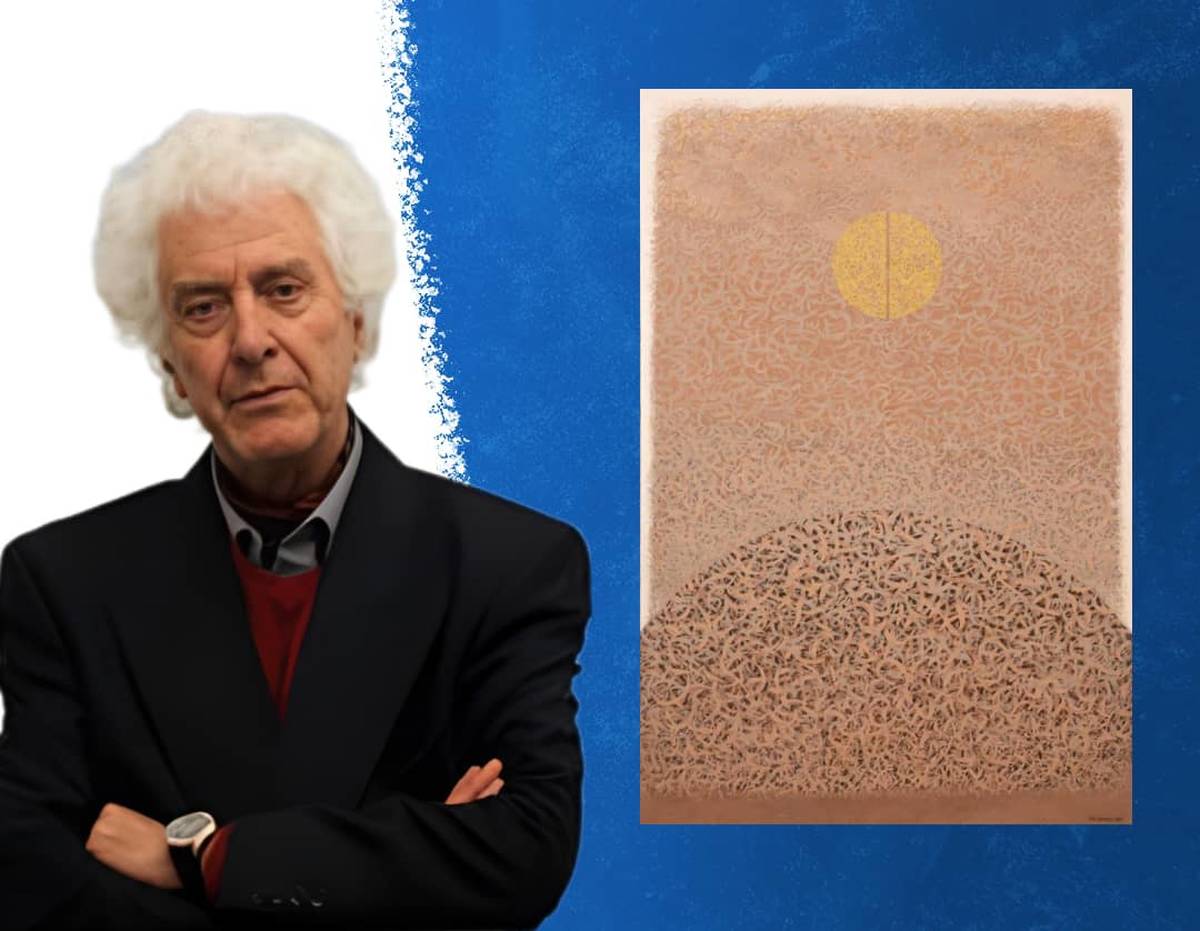
Gholamhossein Nami and the Sun of Hope at Raha Gallery Collection
This painting can be seen as a visual meditation—a spiritual journey from the complexity of the mind toward clarity and peace.
ArtDayMe : The Middle East Raha Gallery Collection, Founded and directed by engineer Mohammadreza Ghaemmaghami, has been actively committed to cultural engagement in the region for over two decades. The collection preserves a rich array of modern and contemporary masterpieces by both Iranian and Arab artists.
One of these works is an untitled piece from Gholamhossein Nami’s iconic collections—a mixed media on canvas created in 2011, measuring 148 × 98 cm. The work was first presented at Tehran Auction in June 2014.

Gholamhossein Nami is considered one of the pioneers of the modern art movement in contemporary Iranian painting. Born in Qom in 1936, he earned a B.A. in Painting from the University of Tehran’s Faculty of Fine Arts and an M.A. from the University of Wisconsin–Madison. At the age of 34, he received the French National Award at the Cannes-sur-Mer International Festival and later achieved major success in the U.S., Italy, and beyond. His works have been featured at prestigious auctions such as Christie’s, Bonhams, and Tehran Auction, with noteworthy sales.
This visually captivating piece, part of the Raha Gallery Collection, features a minimalist and abstract composition. Yet through the repetition and rhythm of its forms, deep meanings emerge. A dense cluster of calligraphic or organic lines dominates the lower part of the painting, gradually becoming lighter as they ascend. A yellow sun at the top center symbolizes illumination, awareness, or spirituality. The vertical line intersecting the sun may suggest unity within duality.
Interpreted symbolically, the work can be seen as a struggle between darkness and light, a passage from the ignorance of shadow into the clarity of knowledge, or the spiritual evolution of the human soul.
Nami’s use of mixed media includes paint, texture, mud, and soil. The surface is layered with intricate materials, creating a sense of depth and motion. The concentrated forms in the lower area thin out as they rise, evoking a sense of release. The organic, rhythmic lines resemble Persian calligraphy, yet without semantic meaning—emphasizing emotional and non-verbal expression.
The color palette is intentionally warm and restrained, dominated by earthy tones: beige, brown, and yellow. These hues evoke groundedness, rootedness, and silence. The yellow sun, the only vivid contrast, breaks this earthy unity, becoming the visual and spiritual center of the work.
As a pioneer of modern art in Iran, Nami’s works often reflect social and cultural transformations.
From a sociological perspective, this piece may portray a society entangled in dense, sometimes confusing symbols, yearning for a light of liberation. The layered lines might hint at cultural clutter, social pressures, or the weight of tradition, while the sun represents a hopeful future or transformative vision.

From a psychological viewpoint, the artwork mirrors an inner process: from mental clutter and anxiety [the lower section] to a longing for peace and enlightenment [the upper sun]. The flowing, repetitive lines convey obsessive thoughts or introspection, yet the overall structure moves toward unity and meaning.
This painting is a visual meditation—a journey from mental chaos toward light and serenity.
The piece is part of the Raha Middle East Gallery Collection.

LEAVE A RELPY